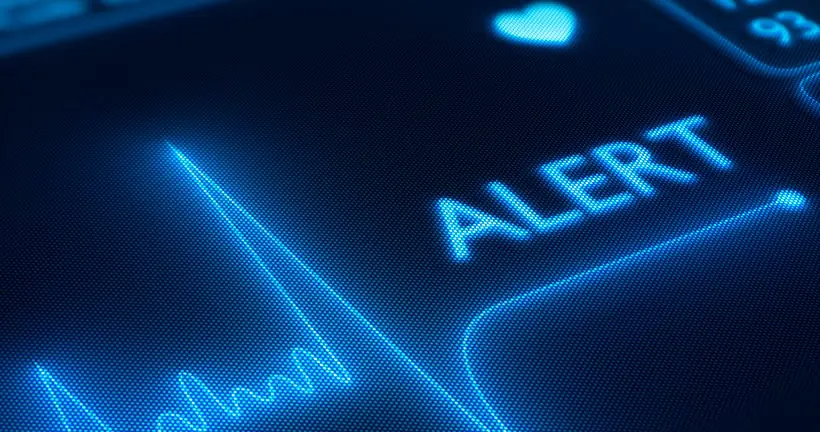
Please note our holiday hours: Thursday, June 19, 2025 - Closed in observance of Juneteenth. Online access to your account(s) will not be affected.


FDIC-Insured - Backed by the full faith and credit of the U.S. Government

FDIC-Insured - Backed by the full faith and credit of the U.S. Government
 VIEW ALL EDUCATION & INSIGHTS
VIEW ALL EDUCATION & INSIGHTS
September 10, 2013
Health Care EFT Mandate

Going Paperless: What the Health Care Industry Needs to Know About the EFT Mandate
Cold-reddened noses, mugs of hot chocolate, and New Year's Resolutions may seem like the distant future in the crisp, sunny days of early September, but the New Year is fast approaching. And with it...the EFT mandate. Are you prepared? We can help. Our Cash Management experts at the Provident Bank have supplied you with a helpful guide below to demystify the latest legislation in health care reform.
An Introduction to the Health Care EFT Mandate
Effective January 1, 2014, Administration Simplification, a section of the Patient Protection and Affordable Care Act (PPACA), develops guidelines first laid out by the Health Insurance Portability and Accountability ACT (HIPAA) in 1996 to further improve quality, accessibility of care, privacy, and efficiency in health care.
As its name suggests, the legislation's intent is to simplify the administrative processes of the industry. It will require all healthcare transmissions to move from check to electronic funds transfer (EFT) via (ACH) and mandate the adoption of a set of "operating rules" to standardize those transactions.
Implications for the Health Care Industry
So, what exactly, does this mean for you? Designed with regard for health care providers and health plans, the new mandate addresses your specific pain points, and the benefits promise to be numerous.
- Cost-Effectiveness: Health care wastes $30 billion annually on paper bills and checks; going digital could save the industry $11 billion. (National Progress Report on Healthcare Efficiency, US Healthcare Efficiency Index, 2010.) Moreover, the cost of claims via ACH is more economical than for other EFT payment types.
- Efficiency: Health Care EFTs via ACH are as quick as receiving a Direct Deposit. They significantly reduce the lag time between receipt of the electronic remittance advice (ERA) and the availability of funds for an EFT. Moreover, they ensure funds are generally available sooner than with paper checks.
- Simplicity: The Reassociation Trace Number (RTN) allows for automatic reassociation of the payment processing information and the ERA.
- Compatibility: Beginning January 1, 2014, all Medicare claims reimbursements must be made as an EFT via ACH. This creates accounts receivable consistencies.
- Security: EFTs are safe and secure, the best defense against fraud.
In accordance with the mandate, Health Plans must be prepared to provide Health Care EFT Transactions, if requested by the Provider, within three days of the transmission of the ERA and include the RTN segment.
Providers should understand that they must proactively contact their financial institutions to request the minimum required CCD+ Data Elements.
The Mandate's Nitty-Gritty:
If you want to learn more about the details of the mandate, we've broken it down into six essential parts:
- Unique identifier for Health Care EFTs: CCD+ entries that are Health Care EFTs will be identified by "HCCLAIMPMT" in the description field.
- Additional formatting requirements for EFT transactions: The EFT standard will now require an additional addenda record, an 80-character field containing payment information, including the ASC X12 835 TR3 RTN Segment.
- Reassociation Trace Number (RTN): Healthcare payment processing information and the ERA are often sent separately, in different electronic formats, through different networks, with different data, and must be recoupled or "reassociated" by the provider. This process often causes systemic mistakes, delays, and inefficiencies. The new rule aims to reduce confusion by standardizing the Reassociation Trace Number (RTN - not to be confused with the Routing & Transit Number - RTN), which is found in both the CCD+ record and the ERA, and is used to match them.
- New EDI segment terminator: The tilde (~) may be used as a second data segment terminator.
- Payment Information Delivery Deadline: The Receiving Depository Financial Institution (RDFI) will be required to provide payment information contained in the addenda record no later than the opening of business on the second banking day following the Settlement Date of the Entry. The RDFI must also offer the health care Provider an option to access the information via a secure, electronic portal.
- Controlled Vocabulary: The mandate indentifies predefined and authorized terms for Health Plans to use when referring to the same data element.
The Response of Financial Institutions
Financial institutions should understand the requirements of the new mandate and serve with their health care customers accordingly. They must be prepared to comply with the NACHA Operating Rules, ready to deliver the CCD+ Addenda Payment Information and RTN when requested by Providers at the branch, by phone, or through their cash or treasury management officers.
Banks and credit unions have a tremendous opportunity before them to strengthen their relationships with Healthcare customers and collaborate more closely with you. They can work to devise innovative products that efficiently provide the RTN, improve payment processing, reduce risk, develop funds management, enhance information delivery, and better protect private health information.
They can also help you navigate through the new world of health care payment processing, coach you through the details, and educate you on the benefits of Health Care EFTs and the new services that simply make your life easier.
Grab your coat, tug on your mittens, and get ready for the New Year and the Health Care EFT!
More Resources:
For more information, please visit www.nacha.org
Glossary of Terms
ACH: The Automated Clearing House is a nationwide electronic funds transfer (EFT) system that processes large volumes of credit and debit transactions and provides for the exchange of information among financial institutions. It manages payroll, direct deposit, insurance premiums, tax refunds, mortgage loans, consumer bills, tax payments, and many more payment services.
CCD+: Cash Concentration or Disbursement can be a credit or debit application where funds are either distributed or consolidated between corporate entities. A CCD+ includes an Addenda Record with detailed payment information.
EDI: The machine-readable standard adopted by the Department of Health and Human Services (DHHS) for Electronic Data Interchange of healthcare transactions. DHHS identified 9 EDI transaction sets, including X12 835 and X12 820 for financial transactions.
EFT: An Electronic Funds Transfer is the electronic exchange of money from one account to another, either within a single financial institution or across a number of institutions, through computer-based systems. It is safe, secure, efficient, and less expensive than paper transactions.
ERA: Electronic Remittance Advice is an electronic payment explanation that provides information regarding claims payment and allows providers to update their accounts receivable and file for secondary insurance.
NACHA: The National Automated Clearing House Association manages the development, administration, and governance of the ACH Network.
RDFI: A Receiving Depository Financial Institution is a financial institution qualified to receive ACH entries.
RTN: The Reassociation Trace Number is an electronic data interchange (EDI) segment, a string of numbers and asterisks which can be read by a machine and looks similar to this: TRN*1*12345*1512345678*999999999\.








 Views
Views


 Views
Views

 Go Back
Go Back











